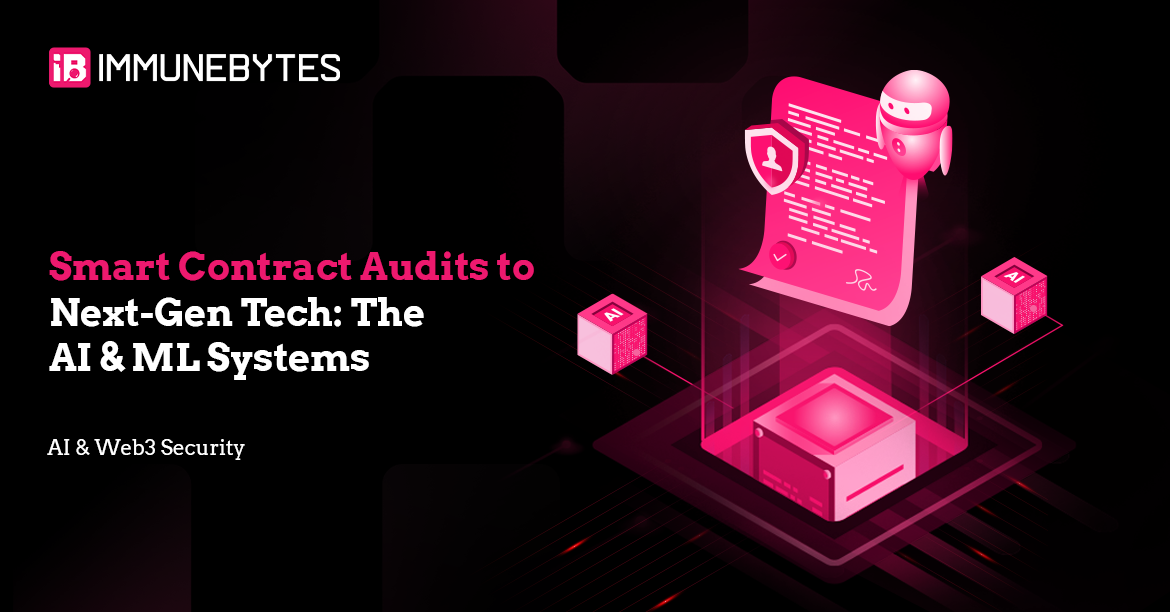Blockchain security has come a long way. Most serious security firms now know how to spot classic vulnerabilities in Solidity and EVM-based chains, reentrancy bugs, sloppy access controls, unchecked calls, and gas drain exploits, even the static analysis techniques have evolved to handle complex detectors. But the threat surface is evolving, and staying stuck in last year’s playbook won’t cut it anymore.
More protocols today rely on Artificial Intelligence and Machine Learning to power high-frequency trading bots, dynamic pricing oracles, on-chain fraud detection, and even autonomous governance agents. This integration adds a new dimension of risk that’s far bigger than the contract code alone.
Trail of Bits summed this up well in a recent post: “It’s naive to think the contract is safe if the data feeding it can’t be trusted.” For auditors, that’s now a fact, not a theory.
A New Layer of Risk: Poisoned Data and Adversarial AI
One of the biggest challenges emerging in this new landscape is poisoned data. Many decentralized prediction markets or oracles crowdsource their training or update data. If a malicious actor finds a way to subtly poison that input, they can manipulate outputs in their favor without touching the contract logic at all.
Adversarial AI is another area getting real attention. Attackers can craft specific inputs that trick a model into making exactly the wrong call. Imagine a fraud detection bot that suddenly flags malicious transactions as legitimate, or a trading algorithm that’s nudged to pump or dump when it shouldn’t. The consequences can drain a treasury overnight.
As Quantstamp quoted in one of their threads, “Models are the new smart contracts. If you don’t secure the pipeline, you lose the game.”
Off-Chain Blind Spots and API Secrets
AI systems in Web3 usually rely on off-chain computation. This means sensitive data and API keys must flow from contracts to external servers, often hosted by third parties. Weak secrets management or sloppy storage can expose these keys to anyone willing to look closely enough.
ConsenSys Diligence has warned that these “off-chain blind spots” are exactly where the next generation of exploits will creep in. Attackers won’t need to exploit a contract if they can break the inference server that feeds it.
zkML: The Promise and the Risk
There’s a lot of hype around zero-knowledge machine learning or zkML as a potential solution for verifiable AI in decentralized systems. In theory, zkML lets a smart contract verify that an AI model’s output is correct, without revealing the model’s inner workings or raw data. This is huge for privacy-preserving DeFi and DAO governance.
But zkML is still very experimental. A single flaw in the circuit or proof generation could let someone submit a fake but “valid” inference. As one researcher tweeted last month, “zkML will be the biggest thing in AI trust or the weakest link. Depends who audits it first.”
The Big Players Are Already Moving
Trail of Bits recently launched an entire AI/ML security practice, treating these systems like they would any cryptographic primitive. They’re looking at data integrity, adversarial resistance, and the end-to-end pipeline that brings AI inferences on-chain.
OpenZeppelin has started exploring how AI agents could create “invisible backdoors” in DAOs if no one verifies the AI’s behavior under edge cases. ConsenSys Diligence is pushing new fuzzing techniques to test how smart contracts react when AI models output extreme or unexpected results.
The common thread? Auditors are realizing they need people who understand machine learning fundamentals, threat modeling, cryptography, and off-chain systems all at once.
Teasing What’s Next
Over the next year, expect to see audit scopes expand. It won’t be enough to say, “Show us your auditing skills.” The new question will be, “Show us your model’s training data, your off-chain inference flow, your API secrets, and your fallback behaviors if the model fails.”
Some teams are already experimenting with bounty-style audit contests for zkML circuits and open-source AI agents. And forward-looking firms are building tools that combine fuzzing and adversarial testing specifically for AI-integrated protocols.
One DeFi founder put it best on X recently: “Our AI agent is our new whale. If you can break its brain, you drain our vaults. Audits must catch that.”
Final Takeaway
Expanding smart contract audits to cover AI and ML isn’t some buzzword-filled nice-to-have, it’s the next battlefront for real security. If a protocol ignores it, they’re patching holes in one layer while attackers slip through the next.
Firms that adapt fast will earn the trust that comes from truly understanding this new threat surface. Firms that don’t will wake up to breaches that never touch a single line of Solidity and wonder where they went wrong.
The next generation of exploits won’t stop at the contract. Neither can we.

